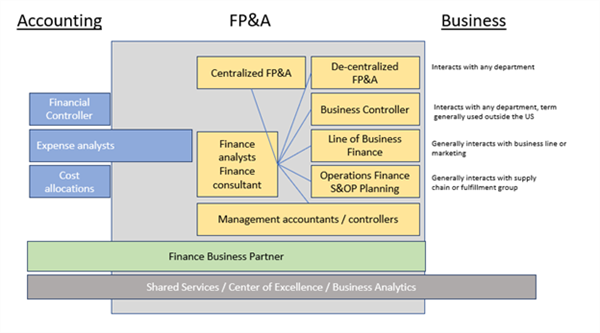Articles
AFP Announces 2022 Asia-Pacific Advisory Council
- By Bryan Lapidus, FPAC
- Published: 1/19/2022

As AFP’s Asia-Pacific (APAC) Financial Planning and Analysis (FP&A) Advisory Council (FPAAC) enters its third year, the need to support finance professionals in the region has never been greater.
The CFO has always been the steward of company capital, responsible for financial controls and reporting, ensuring adequate capital flows, and deploying the next unit of capital for the best long-term return. But the business of finance has changed. Evolving technologies and new tools are creating new capabilities for finance, which leads to new operating models for how we deliver our services to the company — and FP&A is at the forefront.
Council objectives
The overall objective of FPAAC is to establish a networking and advisory group for FP&A practitioners from APAC organizations to discuss best practices, common challenges and innovative initiatives, as well as network with their peers. The council members have contributed their time and effort to creating a regional conference, webinars, and a string of articles illuminating best and emerging practices.
“The Advisory Council helps AFP better understand how to serve our community in this region,” said Himashi Soriano, AFP’s managing director of APAC. "Our members are leaders in FP&A from corporate finance teams all over Asia-Pacific. We meet to share expertise, thought leadership, network and gain insights into how FP&A is driving the future of finance.”
FP&A goes by different names in different companies and countries, as the graphic and member titles below illustrate. The unifying goal, however, is to support business decisions and ensure optimal capital allocation.

New members joining the Advisory Council in 2021 and 2022:
- Kamlesh Bhojwani, Director, FP&A, SE2 Digital Service LLP
- Cecile Francais, Head of FP&A, Cartier China
- Sai (Giri) Giridhar, Finance Director, Shell Energy India
- Connagh Hopkins, Head of Function, Business Planning and Reporting, Western Power
- Xin Gan, Finance Controller, Valeo Service China
- Claire Lu, Manager, FP&A, Hologic
- Johan Van Zyl, Senior Vice President of Data and Process Automation and COE Director, Marsh
Continuing members in 2022:
- Peggy Ang, FP&A Leader for APAC, National Instruments
- Khaled Chowdhury, Director, Analytics & BI, Cabot Microelectronics
- Keyur Shah, Senior Director, APAC, FP&A COE, Johnson & Johnson
- Danny Shiu, Consultant
- Martha Sierra, Regional Head of FP&A, British Council
- Kevin Wong, Asia Finance Lead, Blue Bottle Coffee
- Douglas Yeung, Senior Director, APAC Finance, Genesys
- Weng Hong Yong, FPAC, Former Director, Business Control, Heineken Asia-Pacific, Executive Director, City Mental Health Alliance
APAC-Specific challenges
Creating the Advisory Council in Asia-Pacific has helped to create content that speaks to the specific needs of practitioners in the region from a global perspective. For example, the APAC Advisory Council noted several challenges to FP&A that are specific to the Asia-Pacific region:- Providing feedback. Culturally, some individuals may not feel comfortable questioning authority, sharing their voice or speaking their mind; the challenge is how to be confident, comfortable with ambiguity, and learn to ask the hard, critical questions.
- Finance in APAC may have less independence to act than in other parts of the world. Many large APAC companies are multinationals where software system decisions are made for them in other parts of the world. Another large category of APAC companies are small or medium enterprises that may not have a modern, forward-looking view of FP&A, and therefore not invest in the group.
- Parts of FP&A are evolving at a faster pace than in other parts of the world. It may have been true that in the past FP&A consisted of CPAs, CMAs and former accountants, especially in APAC, but the younger talent moving into this area includes data scientists, data analysts and others. The finance lead for one country noted that, “I have 70 people in my finance team, and less than 10% are CPAs.” Another member noted the change at the rank of CFO — the role is now being populated with management consultants, engineers, people who can dive deeply into problems, develop solutions, collaborate with other executives, and lead a team. FP&A fits this description as well.
- One size does not fit all. APAC is such a large, heterogeneous region that includes so many people, countries, corporate structures, and differences; it is challenging to generalize about the experiences and needs of the entire group! Creating content for APAC
With their guidance and input, AFP will be able to create practical, tactical content that meets the needs of the region.
AFP is your source for FP&A expertise. AFP members have access to the FP&A Maturity Model, a roadmap to help organizations develop a baseline for their FP&A practice. AFP also administers the Certified Corporate FP&A Professional designation, which serves as a benchmark of competency in the FP&A profession.
PARTNER CONTENT
Copyright © 2024 Association for Financial Professionals, Inc.
All rights reserved.

.tmb-small.png?sfvrsn=3731146b_1)
